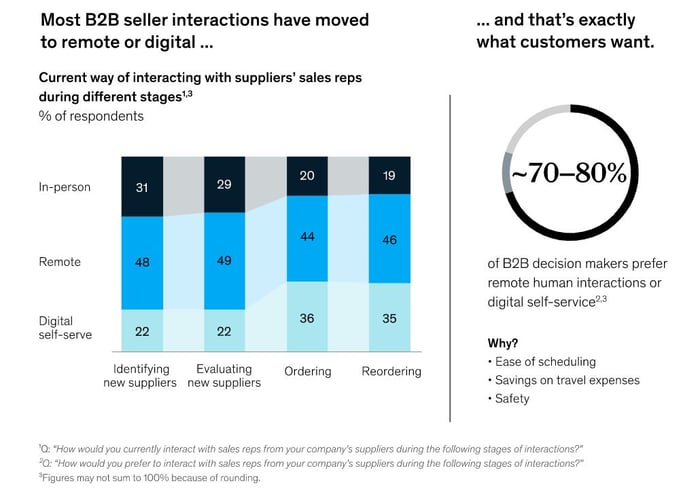eCommerce is sexy, I know that is a bold opening statement, but let me explain. eCommerce offers you the ability to sell around the world, around the …
Listen to this article
Cleverbridge and Adyen partner to power the next generation of global commerce. Read the announcement
eCommerce is sexy, I know that is a bold opening statement, but let me explain. eCommerce offers you the ability to sell around the world, around the …
Written by
Share this post
Subscribe for best practices on optimizing your software business.
Listen to this article
eCommerce is sexy, I know that is a bold opening statement, but let me explain. eCommerce offers you the ability to sell around the world, around the clock, and via interactions that often require little or no human interaction – what is not enticing about that? Oh my! Will the seducing ways of eCommerce push sales teams to the back burner?
Well not exactly… The fact that most of the world’s successful “tech companies” still have large Sales teams indicates we have not yet reached the crossover point, where it is sensible to automate the entire software sales cycle. While eCommerce is used to automate online transactions, there is still value in human interaction, particularly when it comes to finding the match between product fit and client needs/business challenges. This is something technology has not been able to help us with yet.
.jpg?width=699&name=B2Bsales-in-blog-image_(3).jpg)
While digital and human-led sales combinations have co-existed for some time now, this was not always the case. At the beginning of the digital era, many B2B sales organizations viewed digital sales channels as a threat to their existence. In my work with cleverbridge, I regularly come across such companies, that have little or no online sales presence and still rely on the traditional sales rep and channel structure. This has led me to the following question: How can salespeople and digital sales channels happily co-exist while providing unparalleled value and trust for the customer?
The answer: A hybrid-sales model
According to Gartner “A hybrid sales model caters to customers’ digital-first preferences, using omnichannel sales outreach to engage customers in digitally rich discovery and learning. Using these models, software providers can make the buying process easy for customers and share resources that build purchase confidence.”
Unlike a purely digital or human-led sales approach, a hybrid approach offers the best of both worlds. It combines knowledgeable salespeople, who can compile products into a single solution matching your client´s business, with a digital solution that doesn’t take PTO, speaks every language you need it to and is available 24/7, 365. From our experience, exponential growth, particularly in B2B, comes from building a clever bridge between digital and human-driven sales approaches. This is only done by implementing a hybrid approach.

The first step to start your digital transformation is to introduce a digital option for transactions such as renewals or upselling 2-5 licenses to an existing customer. In this case, the customer already knows you – and by not offering a self-service option you face losing their trust and business. Additionally, implementing a self-service approach allows your sales representative to focus on larger, more profitable deals, boosting their commission and morale.
Let´s face it nobody has unlimited resources to expand all over the globe, what we learned from the great resignation is that human resources are scarce, finding the right talent takes time and your time to market is critical, digital channels help you shorten your sale´s cycle and allow you to reach customers that would otherwise be out of reach, cc’ the great resignation.
Not too long ago, I stumbled upon a LinkedIn post from a respected professional with a significant online following. He was complaining about the lack of a self-service option to renew several licenses for a leading CRM tool. He wanted to pay his 30k invoice via credit card online. But guess what? This leading provider did not offer a self-service option. He had to wait for his sales rep, who was OOO, to respond a few days later in order to close the deal. He even went as far as to conduct a poll… Out of 1,808 responders, 69% said they prefer a self-service, auto-renew option. While 30k may seem like a lot of money to spend online, research from McKinsey suggests that B2B consumers are now willing to spend upwards of $500,000 in online transactions.
Forcing digital natives to conduct a transaction in a way that is unfamiliar and complicated for them, will lead them to look elsewhere. B2B customers prefer to buy online through localized and personalized commerce experiences – just like those they receive from B2C. From our experience, companies that adopt/augment traditional buying processes see increased sales and decreased cost through scalability and resource reallocation.
The time is now. Gartner predicts “80% of B2B sales interactions will be digital by 2025.” Don´t leave this until tomorrow. Implement a hybrid sales model today. Introducing an online buying experience is the first step.


